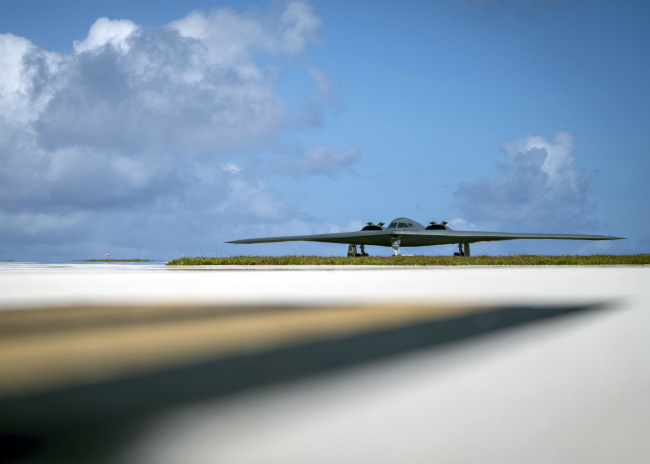South Korea and the United States have agreed to continue US deployment of strategic assets to and around the Korean Peninsula, Seoul’s government said Thursday, in a bid to maintain military pressure on North Korea despite signs of an Olympic detente between the two Koreas.
During Extended Deterrence Strategy and Consultation Group meetings held Wednesday in Washington, the US reaffirmed its commitment to provide extended deterrence for South Korea using a full range of its military capabilities, South Korea’s foreign affairs and defense ministries said.
While keeping up deterrence against North Korea, the allies pledged to address the North’s nuclear ambition in a peaceful and diplomatic manner. The two countries also agreed to maintain close coordination about ongoing inter-Korean talks for North Korea’s participation in the PyeongChang Winter Olympics.
“As long as North Korea’s nuclear and missile program persists, the allies will continue US deployment of strategic assets to South Korea and neighboring region,” the two South Korean ministries said in a joint statement.
 |
B-2 Spirit stealth bomber. Yonhap |
Attending the talks were the allies’ senior diplomats and defense officials, including South Korea’s Vice Foreign Minister Lim Sung-nam, Vice Defense Minister Suh Choo-suk, US Under Secretary of State for Political Affairs Thomas Shannon and Deputy Under Secretary of Defense for Policy David Trachtenberg.
The meeting came as the US military has appeared to enhance its presence in the Western Pacific by sending its high-profile strategic assets such as nuclear-capable stealth bombers and a nuclear-powered aircraft carrier.
On Tuesday, six B-52H Stratofortress bombers were deployed to Andersen Air Force Base on the US island of Guam along with about 300 airmen. The aircraft flew from Barksdale Air Force Base in Louisiana to support the US Pacific Command’s continuous bomber presence mission.
“This forward deployed presence demonstrates the US’ continued commitment to allies and partners in the Indo-Pacific region,” said the US Pacific Air Force. “The B-52Hs’ return to the Pacific will provide US PACOM and its regional allies and partners with a credible, strategic power projection platform.”
Although the US military said the deployment was designed to maintain continuous bomber presence, the move came at a sensitive time, as the two Koreas have resumed inter-Korean talks and taken steps toward a detente during the PyeongChang Winter Olympics.
Last week, the US Air Force deployed three B-2 Spirit nuclear-capable stealth bombers to Guam. The B-2 Spirits and about 200 airmen came in support of the US Pacific Command’s bomber assurance and deterrence mission, the Air Force said.
The USS Carl Vinson aircraft carrier is on its way to the Western Pacific for “regularly scheduled” deployment. The nuclear-powered supercarrier is expected to reach waters near the Korean Peninsula in time for the PyeongChang Olympics, which kick off on Feb. 9.
Meanwhile, a US Virginia-class nuclear-powered submarine has allegedly canceled its plan to make a port call at the Navy base in Busan. South Korea’s Defense Ministry declined to confirm whether the decision had been coordinated with the US.
(
jasonyeo@heraldcorp.com)








